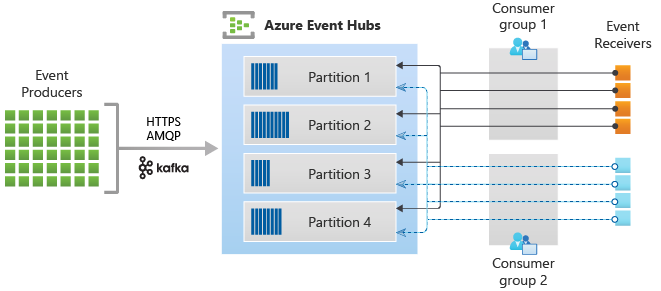Diabetes Survey Analysis on Pima Indians in R
The National Institute of Diabetes and Digestive and Kidney Diseases conducted a study on 768 adult female Pima Indians living near Phoenix. The purpose of the study was to investigate factors related to diabetes.
Dataset
The data may be found in the the dataset pima in faraway package.
# loading dataset
library(faraway)
data(pima)
Format
The dataset contains the following variables:
pregnant Number of times pregnant
glucose Plasma glucose concentration at 2 hours in an oral glucose tolerance test
diastolic Diastolic blood pressure (mm Hg)
triceps Triceps skin fold thickness (mm)
insulin 2-Hour serum insulin (mu U/ml)
bmi Body mass index (weight in kg/(height in metres squared))
diabetes Diabetes pedigree function
age Age (years)
test test whether the patient shows signs of diabetes (coded 0 if negative, 1 if positive)
Initial Data Analyis
# dimensions of dataset
dim(pima)
## [1] 768 9
# top 5 rows
head(pima)
## pregnant glucose diastolic triceps insulin bmi diabetes age test
## 1 6 148 72 35 0 33.6 0.627 50 1
## 2 1 85 66 29 0 26.6 0.351 31 0
## 3 8 183 64 0 0 23.3 0.672 32 1
## 4 1 89 66 23 94 28.1 0.167 21 0
## 5 0 137 40 35 168 43.1 2.288 33 1
## 6 5 116 74 0 0 25.6 0.201 30 0
# summary of data
summary(pima)
## pregnant glucose diastolic triceps
## Min. : 0.000 Min. : 0.0 Min. : 0.00 Min. : 0.00
## 1st Qu.: 1.000 1st Qu.: 99.0 1st Qu.: 62.00 1st Qu.: 0.00
## Median : 3.000 Median :117.0 Median : 72.00 Median :23.00
## Mean : 3.845 Mean :120.9 Mean : 69.11 Mean :20.54
## 3rd Qu.: 6.000 3rd Qu.:140.2 3rd Qu.: 80.00 3rd Qu.:32.00
## Max. :17.000 Max. :199.0 Max. :122.00 Max. :99.00
## insulin bmi diabetes age
## Min. : 0.0 Min. : 0.00 Min. :0.0780 Min. :21.00
## 1st Qu.: 0.0 1st Qu.:27.30 1st Qu.:0.2437 1st Qu.:24.00
## Median : 30.5 Median :32.00 Median :0.3725 Median :29.00
## Mean : 79.8 Mean :31.99 Mean :0.4719 Mean :33.24
## 3rd Qu.:127.2 3rd Qu.:36.60 3rd Qu.:0.6262 3rd Qu.:41.00
## Max. :846.0 Max. :67.10 Max. :2.4200 Max. :81.00
## test
## Min. :0.000
## 1st Qu.:0.000
## Median :0.000
## Mean :0.349
## 3rd Qu.:1.000
## Max. :1.000
Task 1
Create a factor version of the test results and use this to produce an interleaved histogram to show how the distribution of insulin differs between those testing positive and negative. Do you notice anything unbelievable about the plot?
Solution
# create a factor version of the test results
pima$test.f <- factor(pima$test)
levels(pima$test.f) <- c("negative","positive")
# plot insulin vs pima
par(mfrow=c(1,2))
plot(insulin ~ test.f, pima, xlab="diabetes")
plot(jitter(test,0.1)~jitter(insulin),pima,xlab="insulin",
ylab="signs of diabetes",pch="*")

# interleaved histogram
library(ggplot2)
## Warning: package 'ggplot2' was built under R version 3.5.2
ggplot(pima, aes(x=insulin, y=..density.., color=test.f)) +
geom_histogram(position='dodge',binwidth = 30, fill="white") +
geom_density(alpha=.2, fill="#FF6666")

- density/count of
insulinzero is very high (unbelievable)
Task 2
Replace the zero values of insulin with the missing value code NA. Recreate the interleaved histogram plot and comment on the distribution.
Solution
# replace values
pima$insulinN <- pima$insulin
pima$insulinN[pima$insulin==0] <- NA
summary(pima$insulinN)
## Min. 1st Qu. Median Mean 3rd Qu. Max. NA's
## 14.00 76.25 125.00 155.55 190.00 846.00 374
# recreate plot
ggplot(pima, aes(x=insulinN, y=..density.., color=test.f)) +
geom_histogram(position='dodge',binwidth = 30, fill="white") +
geom_density(alpha=.2, fill="#FF6666")
## Warning: Removed 374 rows containing non-finite values (stat_bin).
## Warning: Removed 374 rows containing non-finite values (stat_density).

- Distribution of having diabetes 0(negative) and 1(positive) is not same, implying that
insulinis having significant effect ontestresponse variable.
Task 3
Replace the incredible zeroes in other variables with the missing value code. Fit a model with the result of the diabetes test as the response and all the other variables as predictors. How many observations were used in the model fitting? Why is this less than the number of observations in the data frame?
Solution
# plotting all predictors
pairs(pima)

glucosevalue cannot be zerotricepsthickness cannot be zerodiastolicblood pressure cannot be zerobmiof a person cannot be zero
# replacing incredible zero variables
pima$glucoseN <- pima$glucose
pima$glucoseN[pima$glucose==0] <- NA
pima$tricepsN <- pima$triceps
pima$tricepsN[pima$triceps==0] <- NA
pima$diastolicN <- pima$diastolic
pima$diastolicN[pima$diastolic==0] <- NA
pima$bmiN <- pima$bmi
pima$bmiN[pima$bmi==0] <- NA
summary(pima)
## pregnant glucose diastolic triceps
## Min. : 0.000 Min. : 0.0 Min. : 0.00 Min. : 0.00
## 1st Qu.: 1.000 1st Qu.: 99.0 1st Qu.: 62.00 1st Qu.: 0.00
## Median : 3.000 Median :117.0 Median : 72.00 Median :23.00
## Mean : 3.845 Mean :120.9 Mean : 69.11 Mean :20.54
## 3rd Qu.: 6.000 3rd Qu.:140.2 3rd Qu.: 80.00 3rd Qu.:32.00
## Max. :17.000 Max. :199.0 Max. :122.00 Max. :99.00
##
## insulin bmi diabetes age
## Min. : 0.0 Min. : 0.00 Min. :0.0780 Min. :21.00
## 1st Qu.: 0.0 1st Qu.:27.30 1st Qu.:0.2437 1st Qu.:24.00
## Median : 30.5 Median :32.00 Median :0.3725 Median :29.00
## Mean : 79.8 Mean :31.99 Mean :0.4719 Mean :33.24
## 3rd Qu.:127.2 3rd Qu.:36.60 3rd Qu.:0.6262 3rd Qu.:41.00
## Max. :846.0 Max. :67.10 Max. :2.4200 Max. :81.00
##
## test test.f insulinN glucoseN
## Min. :0.000 negative:500 Min. : 14.00 Min. : 44.0
## 1st Qu.:0.000 positive:268 1st Qu.: 76.25 1st Qu.: 99.0
## Median :0.000 Median :125.00 Median :117.0
## Mean :0.349 Mean :155.55 Mean :121.7
## 3rd Qu.:1.000 3rd Qu.:190.00 3rd Qu.:141.0
## Max. :1.000 Max. :846.00 Max. :199.0
## NA's :374 NA's :5
## tricepsN diastolicN bmiN
## Min. : 7.00 Min. : 24.00 Min. :18.20
## 1st Qu.:22.00 1st Qu.: 64.00 1st Qu.:27.50
## Median :29.00 Median : 72.00 Median :32.30
## Mean :29.15 Mean : 72.41 Mean :32.46
## 3rd Qu.:36.00 3rd Qu.: 80.00 3rd Qu.:36.60
## Max. :99.00 Max. :122.00 Max. :67.10
## NA's :227 NA's :35 NA's :11
# fitting logistic model with logit link
modelNA <- glm(test ~ pregnant + glucoseN + diastolicN + tricepsN + insulinN +
bmiN + diabetes + age, family=binomial, pima)
summary(modelNA)
##
## Call:
## glm(formula = test ~ pregnant + glucoseN + diastolicN + tricepsN +
## insulinN + bmiN + diabetes + age, family = binomial, data = pima)
##
## Deviance Residuals:
## Min 1Q Median 3Q Max
## -2.7823 -0.6603 -0.3642 0.6409 2.5612
##
## Coefficients:
## Estimate Std. Error z value Pr(>|z|)
## (Intercept) -1.004e+01 1.218e+00 -8.246 < 2e-16 ***
## pregnant 8.216e-02 5.543e-02 1.482 0.13825
## glucoseN 3.827e-02 5.768e-03 6.635 3.24e-11 ***
## diastolicN -1.420e-03 1.183e-02 -0.120 0.90446
## tricepsN 1.122e-02 1.708e-02 0.657 0.51128
## insulinN -8.253e-04 1.306e-03 -0.632 0.52757
## bmiN 7.054e-02 2.734e-02 2.580 0.00989 **
## diabetes 1.141e+00 4.274e-01 2.669 0.00760 **
## age 3.395e-02 1.838e-02 1.847 0.06474 .
## ---
## Signif. codes: 0 '***' 0.001 '**' 0.01 '*' 0.05 '.' 0.1 ' ' 1
##
## (Dispersion parameter for binomial family taken to be 1)
##
## Null deviance: 498.10 on 391 degrees of freedom
## Residual deviance: 344.02 on 383 degrees of freedom
## (376 observations deleted due to missingness)
## AIC: 362.02
##
## Number of Fisher Scoring iterations: 5
# number of observations used in the model fitting
nobs(modelNA)
## [1] 392
# total number of observations in the dataframe
dim(pima)[1]
## [1] 768
- All the missing values (NA) observations are skipped while fitting the model
Task 4
Refit the model but now without the insulin and triceps predictors. How many observations were used in fitting this model? Devise a test to compare this model with that in the previous question.
Solution
# refit model without insulin and triceps
model2NA <- glm(test ~ pregnant + glucoseN + diastolicN +
bmiN + diabetes + age, family=binomial, pima)
# number of observations used in the model fitting
nobs(model2NA)
## [1] 724
We can create a hypothesis test to check whether insulin and triceps are significant predictors or not.
# testing hypothesis using F-test
# omitting all NA observations
pimaN <- na.omit(pima)
dim(pimaN)
## [1] 392 15
# creating new models with same number of observations
modelNA1 <- glm(test ~ pregnant + glucoseN + diastolicN + tricepsN + insulinN +
bmiN + diabetes + age, family=binomial, pimaN)
modelNA2 <- glm(test ~ pregnant + glucoseN + diastolicN +
bmiN + diabetes + age, family=binomial, pimaN)
# anova F-test
anova(modelNA1, modelNA2, test='Chi')
## Analysis of Deviance Table
##
## Model 1: test ~ pregnant + glucoseN + diastolicN + tricepsN + insulinN +
## bmiN + diabetes + age
## Model 2: test ~ pregnant + glucoseN + diastolicN + bmiN + diabetes + age
## Resid. Df Resid. Dev Df Deviance Pr(>Chi)
## 1 383 344.02
## 2 385 344.88 -2 -0.85931 0.6507
- p-value is greater than 5% significance level, implying we can reject alternate hypothesis thereby stating
insulinandtricepspredictors are not significant. Hence, model without these predictors is better.
Task 5
Use AIC to select a model. You will need to take account of the missing values. Which predictors are selected? How many cases are used in your selected model?
Solution
# AIC model selection
# stepwise selection without any missing values model
step_model <- step(modelNA1, trace=FALSE)
summary(step_model)
##
## Call:
## glm(formula = test ~ pregnant + glucoseN + bmiN + diabetes +
## age, family = binomial, data = pimaN)
##
## Deviance Residuals:
## Min 1Q Median 3Q Max
## -2.8827 -0.6535 -0.3694 0.6521 2.5814
##
## Coefficients:
## Estimate Std. Error z value Pr(>|z|)
## (Intercept) -9.992080 1.086866 -9.193 < 2e-16 ***
## pregnant 0.083953 0.055031 1.526 0.127117
## glucoseN 0.036458 0.004978 7.324 2.41e-13 ***
## bmiN 0.078139 0.020605 3.792 0.000149 ***
## diabetes 1.150913 0.424242 2.713 0.006670 **
## age 0.034360 0.017810 1.929 0.053692 .
## ---
## Signif. codes: 0 '***' 0.001 '**' 0.01 '*' 0.05 '.' 0.1 ' ' 1
##
## (Dispersion parameter for binomial family taken to be 1)
##
## Null deviance: 498.10 on 391 degrees of freedom
## Residual deviance: 344.89 on 386 degrees of freedom
## AIC: 356.89
##
## Number of Fisher Scoring iterations: 5
- Again,
insulinandtricepsare not selected as significant predictors, implying correctness of our previous hypothesis. glucose,bmi,diabetesandageare considered as significant predictors as per AIC.
Task 6
Create a variable that indicates whether the case contains a missing value. Use this variable as a predictor of the test result. Is missingness associated with the test result? Refit the selected model, but now using as much of the data as reasonable. Explain why it is appropriate to do this.
Solution
# variable to indicate if there is some missing value
pima$missingCase <- apply(pima,1,anyNA)
xtabs(~test.f+missingCase,pima)
## missingCase
## test.f FALSE TRUE
## negative 262 238
## positive 130 138
# fitting model with missingness
modelMissingCases <- glm(test.f~missingCase, family=binomial,pima)
summary(modelMissingCases)
##
## Call:
## glm(formula = test.f ~ missingCase, family = binomial, data = pima)
##
## Deviance Residuals:
## Min 1Q Median 3Q Max
## -0.9564 -0.9564 -0.8977 1.4159 1.4857
##
## Coefficients:
## Estimate Std. Error z value Pr(>|z|)
## (Intercept) -0.7008 0.1073 -6.533 6.47e-11 ***
## missingCaseTRUE 0.1558 0.1515 1.028 0.304
## ---
## Signif. codes: 0 '***' 0.001 '**' 0.01 '*' 0.05 '.' 0.1 ' ' 1
##
## (Dispersion parameter for binomial family taken to be 1)
##
## Null deviance: 993.48 on 767 degrees of freedom
## Residual deviance: 992.43 on 766 degrees of freedom
## AIC: 996.43
##
## Number of Fisher Scoring iterations: 4
We can check if missingness is associated with test result using hypothesis testing by checking whether missingCase parameter is significant or not.
# checking significance of missingCase parameter
anova(modelMissingCases,test="Chi")
## Analysis of Deviance Table
##
## Model: binomial, link: logit
##
## Response: test.f
##
## Terms added sequentially (first to last)
##
##
## Df Deviance Resid. Df Resid. Dev Pr(>Chi)
## NULL 767 993.48
## missingCase 1 1.0579 766 992.43 0.3037
- p-value(0.3037) is greater than 5% significance level, implying alternate hypothesis can be rejected, thereby
missingCaseis not significant. - Hence, missingness is not associated with
testresults.
# re-fit selected model with pimaN dataset
# pimaN dataset is having no missing values
modelrs <- glm(test.f ~ pregnant + glucoseN + bmiN + diabetes + age,
family=binomial, pimaN)
summary(modelrs)
##
## Call:
## glm(formula = test.f ~ pregnant + glucoseN + bmiN + diabetes +
## age, family = binomial, data = pimaN)
##
## Deviance Residuals:
## Min 1Q Median 3Q Max
## -2.8827 -0.6535 -0.3694 0.6521 2.5814
##
## Coefficients:
## Estimate Std. Error z value Pr(>|z|)
## (Intercept) -9.992080 1.086866 -9.193 < 2e-16 ***
## pregnant 0.083953 0.055031 1.526 0.127117
## glucoseN 0.036458 0.004978 7.324 2.41e-13 ***
## bmiN 0.078139 0.020605 3.792 0.000149 ***
## diabetes 1.150913 0.424242 2.713 0.006670 **
## age 0.034360 0.017810 1.929 0.053692 .
## ---
## Signif. codes: 0 '***' 0.001 '**' 0.01 '*' 0.05 '.' 0.1 ' ' 1
##
## (Dispersion parameter for binomial family taken to be 1)
##
## Null deviance: 498.10 on 391 degrees of freedom
## Residual deviance: 344.89 on 386 degrees of freedom
## AIC: 356.89
##
## Number of Fisher Scoring iterations: 5
- we can use model by omitting all missing values (NA) since missingness is not having any significant effect on the
testresponse variable.
Task 7
Using the last fitted model of the previous question, what is the difference in the log-odds of testing positive for diabetes for a woman with a BMI at the first quartile compared with a woman at the third quartile, assuming that all other factors are held constant? Then calculate the associated odds ratio value, and give a 95% confidence interval for this odds ratio.
Solution
# BMI first and third quartile - using dataset with no missing values
summary(pimaN$bmiN)
## Min. 1st Qu. Median Mean 3rd Qu. Max.
## 18.20 28.40 33.20 33.09 37.10 67.10
Log-odds are given as:
\[o = \frac{p}{1-p} \Rightarrow p = \frac{o}{1+o}\]In terms of logit link, this can be written as:
\[log \frac{p_i}{1-p_i} = \eta_i \Rightarrow log\:o_i=\eta_i\]Difference in log-odds for 1st and 3rd quartile can be given as:
\[log\:o_1 - log\:o_3 = \eta_1 - \eta_3\]# get quartiles
(bmi_1st_quartile = quantile(pimaN$bmiN,0.25))
## 25%
## 28.4
(bmi_3rd_quartile = quantile(pimaN$bmiN,0.75))
## 75%
## 37.1
# get bmi fitted value
(beta_bmi = coefficients(modelrs)['bmiN'])
## bmiN
## 0.07813866
# calculate eta keeping other factors constant
eta_1st_quartile = bmi_1st_quartile * beta_bmi
eta_3rd_quartile = bmi_3rd_quartile * beta_bmi
# difference in log odds for 1st and 3rd quartiles
(diff_log_odds = eta_1st_quartile - eta_3rd_quartile)
## 25%
## -0.6798063
Odds-ratio is given as:
\[\frac{o_1}{o_3} = exp(log(\frac{o_1}{o_3})) = exp(log\:o_1 - log\:o_3) = exp(\eta_1 - \eta_3)\]# log odds-ratio value
(exp(diff_log_odds))
## 25%
## 0.5067151
We can calculate 95% confidence interval for bmi parameter as:
\[[\hat{\beta_{bmi}}\: \pm \: q_{0.975}*\sqrt{I(\beta_{bmi})^{-1}}]\]# calculate 95% confidence interval for bmi parameter
(conf_int_bmi = confint(modelrs,'bmiN'))
## Waiting for profiling to be done...
## 2.5 % 97.5 %
## 0.03874896 0.11984439
# 95% confidence interval for log-odds ratio
(odds_ratio = (exp(conf_int_bmi * (bmi_1st_quartile - bmi_3rd_quartile))))
## 2.5 % 97.5 %
## 0.7138261 0.3525206
# chance
(odds_ratio/(1+odds_ratio))
## 2.5 % 97.5 %
## 0.4165102 0.2606397
- So, keeping other parameters constant, odds of showing evidence of diabetes for a women with a BMI at the first quartile(28.4) are between
26 to 41 percent lessas compared to a women with a BMI at the third quartile(37.1)
Task 8
Do women who test positive have higher diastolic blood pressures? Is the diastolic blood pressure significant in the logistic regression model? Explain the distinction between the two questions and discuss why the answers are only apparently contradictory.
Solution
# checking correlations of diastolic with other predictors
data(pima)
# removing rows
missing <- with(pima, missing <- glucose==0 | diastolic==0 | triceps==0 | bmi == 0)
pima <- pima[!missing,]
cor(pima)['diastolic',]
## pregnant glucose diastolic triceps insulin bmi
## 0.204663421 0.219177950 1.000000000 0.226072440 0.007051676 0.307356904
## diabetes age test
## 0.008047249 0.346938723 0.183431874
- Clearly,
diastolicshows a positive correlation withtestresponse variable. - Moreover,
diastolichave positive correlation with other variables such asglucose,bmiand other predictors. So,testis more likely to be positive whendiastolicis large as other predictors will also be large.
# interleaved histogram for diastolic
ggplot(pimaN, aes(x=diastolic, y=..density..,color=test.f)) +
geom_histogram(position='dodge', fill='white', binwidth = 10) +
geom_density(alpha=.2, fill="#FF6666")

- On contrary, distribution for both negative and positive diabetes looks similar, implying that
diastolicis not significant enough fortestresponse variable.
# logistic model
summary(modelNA)
##
## Call:
## glm(formula = test ~ pregnant + glucoseN + diastolicN + tricepsN +
## insulinN + bmiN + diabetes + age, family = binomial, data = pima)
##
## Deviance Residuals:
## Min 1Q Median 3Q Max
## -2.7823 -0.6603 -0.3642 0.6409 2.5612
##
## Coefficients:
## Estimate Std. Error z value Pr(>|z|)
## (Intercept) -1.004e+01 1.218e+00 -8.246 < 2e-16 ***
## pregnant 8.216e-02 5.543e-02 1.482 0.13825
## glucoseN 3.827e-02 5.768e-03 6.635 3.24e-11 ***
## diastolicN -1.420e-03 1.183e-02 -0.120 0.90446
## tricepsN 1.122e-02 1.708e-02 0.657 0.51128
## insulinN -8.253e-04 1.306e-03 -0.632 0.52757
## bmiN 7.054e-02 2.734e-02 2.580 0.00989 **
## diabetes 1.141e+00 4.274e-01 2.669 0.00760 **
## age 3.395e-02 1.838e-02 1.847 0.06474 .
## ---
## Signif. codes: 0 '***' 0.001 '**' 0.01 '*' 0.05 '.' 0.1 ' ' 1
##
## (Dispersion parameter for binomial family taken to be 1)
##
## Null deviance: 498.10 on 391 degrees of freedom
## Residual deviance: 344.02 on 383 degrees of freedom
## (376 observations deleted due to missingness)
## AIC: 362.02
##
## Number of Fisher Scoring iterations: 5
- This also supports our claim that
diastolicis not significant in presence of other variables as p-value is very high at 5% significance level
Hence, answers appears to be contradictory.
Checkout Github repo for markdown files: https://github.com/abhinavcreed13/MAST90139-Practice-Models/tree/master/Practice-3





Leave a comment